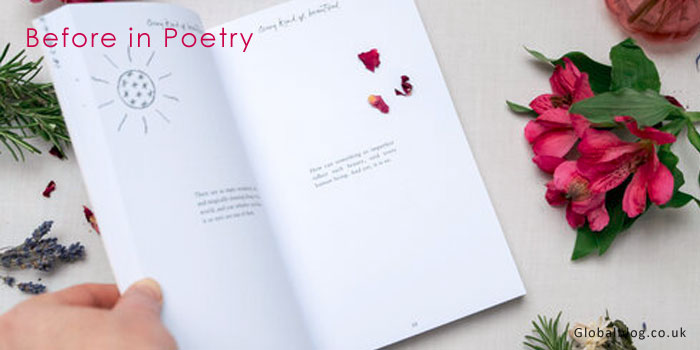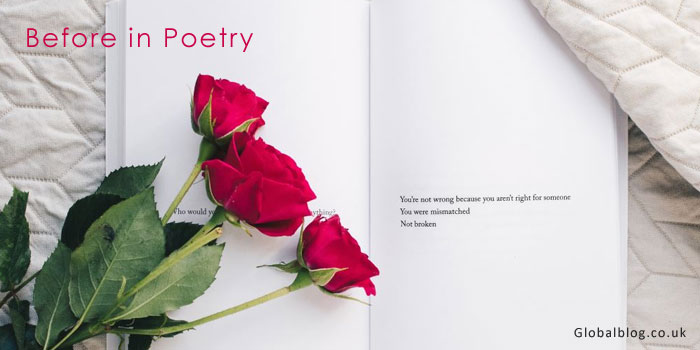Introduction to Poetry
Before in Poetry is a timeless art form that speaks to the heart and soul. It captures emotions, paints vivid images, and transports readers to worlds unknown. Whether you’re a seasoned poet or just starting your journey, understanding the nuances of poetry can enhance your writing experience.
Have you ever felt an urge to express yourself through words? Perhaps you’ve jotted down thoughts or observations but weren’t sure how to shape them into poems. You’re not alone! Many aspiring poets grapple with finding their voice and style Before in Poetry diving into this creative endeavor.
This guide will explore various aspects of poetry – from different forms and styles to imagery techniques that breathe life into your verses. With practical tips on honing your writing skills and seeking inspiration, you’ll be equipped to create memorable pieces that resonate with others. So grab your pen, unleash your creativity, and let’s embark on this poetic adventure together!
Understanding the Different Forms and Styles of Before in Poetry
Before in Poetry was a vast realm, filled with diverse forms and styles. Each offers unique ways to express emotions and ideas.
From sonnets to haikus, each form has its rules. Sonnets are typically 14 lines long, often exploring themes of love or nature. On the other hand, haikus consist of just three lines but pack powerful imagery within their brevity.
Free verse allows poets to break away from traditional structures. This style gives freedom for spontaneous expression without strict rhythmic patterns.
Then there’s narrative poetry, which tells a story through verses. It can transport readers into vivid worlds while unfolding characters and plots.
Experimenting with different forms can ignite creativity. Understanding these styles enriches your writing journey and helps you discover your voice in this expressive art form.
The Importance of Imagery, Metaphors, and Similes in Poetry
Before in Poetry – Imagery, metaphors, and similes are the lifeblood of poetry. They breathe life into words, transforming simple phrases into vivid experiences. Imagery allows readers to see, hear, and feel the poet’s world. It paints pictures that linger in the mind long after reading.
Metaphors create connections between seemingly unrelated things. They offer deeper meanings wrapped in elegance. For example, comparing a fleeting moment to a passing cloud evokes emotions that straightforward statements cannot convey.
Similes enhance understanding by drawing direct comparisons using “like” or “as.” These tools clarify complex feelings and ideas through relatable imagery.
Together, these elements craft rich tapestries of emotion and thought. They invite readers on journeys filled with nuances and subtleties often missed in everyday language. The beauty lies not just in what is said but in how it resonates within us all.
Tips for Developing Your Writing Style
Before in Poetry – Developing your writing style is an essential part of expressing yourself through poetry. Start by reading a wide range of poets. Notice what resonates with you, whether it’s their use of language, rhythm, or themes.
Experimentation is key. Play with different forms and structures in your poems. Try free verse one day and sonnets the next. This will help you discover what feels most authentic to you.
Before in Poetry – Don’t shy away from personal experiences and emotions. Infusing your work with genuine feelings can create a unique voice that reflects who you are.
Write every day, even if it’s just a few lines. Consistent practice helps refine your style over time.
Be open to feedback but trust your instincts as well. Your writing should feel true to yourself, so embrace the imperfections along the way; they make each poem uniquely yours.

Finding Inspiration for Poems – Before in Poetry
Before in Poetry – Finding inspiration for poems can feel like chasing shadows. It often appears when least expected, in fleeting moments of life.
Nature is a treasure trove. A crisp autumn leaf or the sound of rain tapping against your window can spark a new idea. Pay attention to these small details.
Everyday experiences also offer rich material. Conversations, emotions, and even mundane routines have layers worth exploring. Write down thoughts that resonate with you; they might evolve into something profound.
Art and music are powerful catalysts too. Visit galleries or immerse yourself in melodies that move you deeply. Let their essence seep into your writing.
Before in Poetry – Don’t shy away from personal reflection. Your journey – joys and struggles alike – can fuel creativity like nothing else can. Embrace vulnerability; it often leads to genuine expression in poetry.
The Editing Process: Refining Your Poems
Before in Poetry – Editing is a crucial step in poetry. It transforms raw thoughts into polished art. Start by distancing yourself from the initial draft. A fresh perspective can unveil flaws that were previously unnoticed.
Read your poem aloud. Hearing it helps catch awkward phrasing or rhythm issues. Listen for flow and cadence, allowing emotion to guide you through revisions.
Focus on word choice too. Each word should carry weight; eliminate unnecessary fluff. Strong verbs and vivid nouns breathe life into your lines.
Before in Poetry – Pay attention to imagery as well. Are the visuals clear? Do they evoke emotions? If not, refine them until each image resonates deeply with readers.
Seek feedback from trusted peers or mentors. They can offer insights that enrich your work further than you might achieve alone—sometimes a simple suggestion makes all the difference in clarity and impact.
Resources and Tools for Aspiring Poets
Before in Poetry – Aspiring poets have a wealth of resources at their fingertips. Online platforms like Poetizer and AllPoetry provide vibrant communities where you can share your work and receive feedback.
Poetry books craft are invaluable. Titles such as “The Poetry Home Repair Manual” by Ted Kooser offer insights into the writing process.
Don’t overlook local workshops, too. Many libraries and community centers host events that connect budding poets with mentors. These settings encourage collaboration and constructive criticism.
Before in Poetry – Digital tools also play a pivotal role. Apps like Evernote or Google Keep allow you to jot down ideas whenever inspiration strikes.
Podcasts dedicated to poetry can be enlightening as well, exposing you to different styles and voices in the field. Social media channels often feature prompt challenges that spark creativity among writers everywhere.
Conclusion: Before in Poetry
Before in Poetry is a remarkable art form that allows us to express our thoughts and feelings in unique ways. Each poet brings their voice, experiences, and emotions to the page. By understanding the different forms and styles of poetry, you can discover what resonates with you.
As an aspiring poet, utilize available resources like workshops or online communities to connect with others who share your passion. These tools can provide support and guidance along the way.
Embrace this journey of creativity as a continual evolution filled with exploration and discovery through “Before in Poetry.” The world awaits the stories only you can tell.
